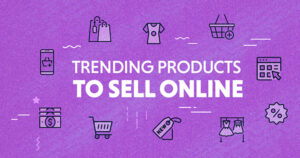In today’s digital age, where social media, email, and online advertising dominate the marketing landscape, it’s easy to overlook the power of direct mail. However, when it comes to healthcare marketing, direct mail offers a personal, targeted, and trusted approach that can set you apart from the competition. For healthcare providers looking to engage patients, communicate vital information, or promote services, direct mail provides an invaluable tool that delivers consistent results.
Healthcare direct mail marketing blends traditional marketing with modern technology to create campaigns that resonate on a personal level. With the right strategy, direct mail can help healthcare organizations build trust, enhance patient loyalty, and drive measurable outcomes.
Why Direct Mail Works in Healthcare
Healthcare is a unique industry where trust and communication are key factors in patient engagement and satisfaction. Unlike many other sectors, healthcare marketing requires a more sensitive and personalized approach, ensuring that patients feel cared for and respected. Direct mail allows healthcare providers to achieve this personal touch in several ways:
1. Tangibility: Unlike digital marketing, direct mail physically reaches patients, making it harder to ignore. A postcard or brochure in hand leaves a longer-lasting impression than an email that can easily be overlooked or deleted. For healthcare providers, direct mail presents an opportunity to engage patients with materials they can hold, read, and review at their convenience.
2. Personalization: Direct mail allows for a level of personalization that’s critical in healthcare marketing. Tailored content that addresses a patient’s specific needs—such as upcoming appointments, health tips, or treatment options—can create a more meaningful connection than generic marketing messages.
3. Trustworthiness: Consumers, including patients, often view direct mail as more credible and trustworthy compared to digital ads or email campaigns. In healthcare, where trust is paramount, direct mail helps establish authority and professionalism in a way that digital marketing sometimes struggles to match.
4. Regulatory Compliance: With strict regulations such as HIPAA Health Insurance Portability and Accountability Act in place, healthcare providers need to ensure that all patient communications are secure and compliant. Direct mail offers a secure way to send sensitive health information, as long as patient privacy is maintained throughout the mailing process.
Benefits of Healthcare Direct Mail Marketing
Healthcare direct mail marketing is versatile, cost-effective, and highly customizable. Whether you’re a private practice, hospital, pharmacy, or health insurance provider, there are several key benefits to incorporating direct mail into your marketing strategy.
1. Increased Patient Engagement
Direct mail enables healthcare providers to reach patients directly in their homes, encouraging them to take action. Whether it’s a reminder for an upcoming appointment, information about new healthcare services, or seasonal flu shot promotions, direct mail campaigns can drive higher engagement than digital channels alone. According to recent studies, direct mail boasts an open rate of 90%, much higher than typical email open rates, making it an effective way to get your message across.
2. Improved Patient Retention
Retaining patients is a significant challenge for many healthcare providers. Direct mail helps by keeping your practice or organization top of your mind. A well-crafted campaign that includes birthday cards, follow-up appointment reminders, or personalized health tips can foster long-term patient loyalty.
3. Targeted Communication
Healthcare direct mail marketing allows you to target specific patient demographics with tailored messages. For example, you can send targeted mail to elderly patients about upcoming health screenings or reach out to families with children regarding vaccinations. This ability to segment your audience ensures that each recipient receives information relevant to their needs, making your campaign more effective.
4. Cost Efficiency
Direct mail campaigns can be scaled according to your budget. You can opt for simple postcards or brochures, or more complex mailings with multiple pieces of content. The return on investment for direct mail is high, especially when compared to the fluctuating costs of digital ads.
5. Regulatory Compliance and Security
HIPAA compliance is a major consideration for healthcare marketing. Direct mail ensures that sensitive patient information is communicated securely. Healthcare providers can send medical bills, appointment reminders, or test results through direct mail, ensuring that privacy regulations are upheld while still maintaining consistent patient communication.
How to Get the Most Out of Your Healthcare Direct Mail Campaign
To maximize the effectiveness of your healthcare direct mail marketing, it’s essential to follow best practices that can optimize engagement and response rates. Here are several strategies to consider:
1. Segment Your Audience
One of the key benefits of direct mail is the ability to segment your audience based on various factors such as age, location, health conditions, or treatment history. By creating different mailing lists for each segment, you can tailor your messages to specific patient groups, ensuring that your content resonates with their needs and preferences.
2. Personalize the Message
Personalized direct mail performs better because it feels more relevant and engaging. Use the recipient’s name, include information about their health history, or reference previous appointments. This level of personalization can go a long way in making your patients feel valued.
3. Provide Clear Calls to Action
Make sure your direct mail piece includes a clear and compelling call to action CTA. Whether you want patients to book an appointment, sign up for a health screening, or visit your website, the CTA should be easy to understand and straightforward to follow.
4. Track and Measure Results
Use tracking methods such as unique promo codes, personalized URLs PURLs, or QR codes to monitor the success of your direct mail campaigns. By measuring response rates and analyzing which pieces of mail are driving the most engagement, you can refine future campaigns for even better results.
5. Ensure Data Accuracy
To avoid wasted resources and ensure your mail reaches the right recipients, it’s essential to verify street addresses before sending out a campaign. Address verification tools, like PostGrid’s address checker https://www.postgrid.com/address-checker/, can help you clean up your mailing list, minimize returned mail, and ensure the accuracy of your patient database.
Healthcare Direct Mail Campaign Ideas
To inspire your next direct mail campaign, here are a few examples of how healthcare providers can use direct mail effectively:
– Appointment Reminders: Send personalized postcards or letters reminding patients of upcoming appointments or encouraging them to book their next visit.
– Health Education Mailers: Provide patients with valuable information about maintaining their health, such as tips for managing chronic conditions, seasonal health advice, or the benefits of specific treatments.
– Preventative Care Reminders: Encourage patients to schedule annual check-ups, vaccinations, or screenings by sending timely reminders in the mail.
– Service Announcements: Introduce new services or highlight lesser-known offerings to encourage patients to take advantage of your full range of healthcare options.
Conclusion
Direct mail is a powerful tool in healthcare marketing, offering a personal, trustworthy, and highly effective way to reach patients. It allows healthcare providers to communicate important information, drive engagement, and build lasting relationships. By leveraging healthcare direct mail marketing, you can create campaigns that not only resonate with your patients but also meet your regulatory obligations and business objectives.







Be First to Comment